| XXXXXX |
XXXXXXXXXXXXXXXXXXXXXXXXXXXXXXXXXXXXXXXXXXXXXXXXXXXXXXXXXXXXXXXXXXXXXXX |
XXXXXX |
XXXXXX |
XXXXXX |
| |
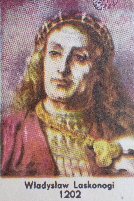
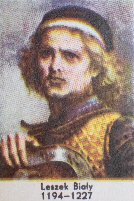
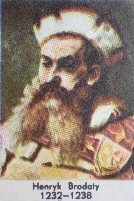
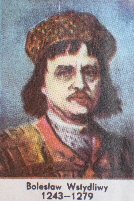
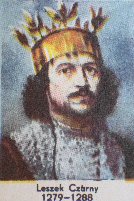
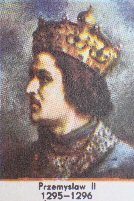 |
|
|
|
| |
The 13th century was a period marked
by significant political and cultural transformations across Europe.
One of the most notable events was
the signing of the Magna Carta
in 1215, which laid the foundation for modern constitutional law.
The Mongol Empire expanded
rapidly under Genghis Khan, reshaping the political landscape of
Asia and parts of Europe.
The Crusades continued during
this century, with the Seventh and Eighth Crusades attempting to
reclaim the Holy Land. In 1241,
the Battle of Legnica saw
European forces confront the Mongol invaders in Poland.
The establishment of the
University of Oxford and the University of Paris signified a
major advance in higher education.
Architectural achievements flourished, exemplified by the construction
of Gothic cathedrals like
Notre-Dame de Paris. The rise of the Mongols disrupted trade
routes but also facilitated cultural exchanges between East and West.
The Fourth Lateran Council in
1215 codified Church doctrines and imposed stricter regulations on
clergy. England experienced internal strife, culminating in the
Barons' War against King Henry III. In the Iberian Peninsula, the
Reconquista progressed, with Christian kingdoms gradually reclaiming
territory from Muslim rule.
The Mongol invasion of Eastern Europe was eventually halted, preserving
the region's political autonomy.
The 13th century saw the beginnings of
the Renaissance in Italy,
with increased interest in classical knowledge. Literary works such as
Dante Alighieri's early
writings began to emerge during this time.
The Teutonic Knights
played a crucial role in the Baltic region, expanding Christian
influence. Economic growth was stimulated by the revival of trade fairs
and the establishment of banking systems.
Technological innovations included
improvements in shipbuilding and
the introduction of the mechanical clock. The Black Death had not
yet struck, allowing populations to grow and urban centres to develop.
The Mongol postal system enhanced communication across vast distances.
Overall the 13th century laid critical groundwork for the social and
political developments of the later Middle Ages. |
|
|
|
| 1200 |
|
|
|
|
| 1200 |
|
|
|
|
| 1201 |
|
|
|
|
| 1202 |
|
|
|
|
| 1203 |
|
|
|
|
| 1204 |
|
|
|
|
| 1205 |
|
|
|
|
| 1206 |
|
|
|
|
| 1207 |
|
|
|
|
| 1208 |
|
|
|
|
| 1209 |
|
|
|
|
| 1210 |
|
|
|
|
| 1211 |
|
|
|
|
| 1212 |
|
|
|
|
| 1213 |
|
|
|
|
| 1214 |
|
|
|
|
| 1215 |
Up until 1215, the power of the king in England had been
almost unlimited. Now, Parliament began to develop. It started out as a
small council of advisors, noblemen and church leaders, and steadily
grew into something much larger like today's system of government.
Appalled by cruelty of the kings, the nobles force King John to agree to
a charter of rights called the
Magna Carta. The king become a subject to law, and could not just
act of his own accord. In order to make big decisions about taxes and
law, the king would need to consult with the noblemen first. This would
be known as Parliament. In Parliament two houses were established: The
House of Lords (nobility in society like landowners and bishops) and The
House of Commons (Knights and wealthy people). The judges began to be
chosen by merit (zasługa) or precedence
(pierwszeństwo), where previously they had simply
been an extension of the government. |
|
|
|
| 1216 |
|
|
|
|
| 1217 |
|
|
|
|
| 1218 |
|
|
|
|
| 1219 |
|
|
|
|
| 1220 |
|
|
|
|
| 1221 |
|
|
|
|
| 1222 |
|
|
|
|
| 1223 |
|
|
|
|
| 1224 |
|
|
|
|
| 1225 |
|
|
|
|
| 1226 |
|
|
|
|
| 1227 |
|
|
|
|
| 1228 |
|
|
|
|
| 1229 |
|
|
|
|
| 1230 |
|
|
|
|
| 1231 |
|
|
|
|
| 1232 |
|
|
|
|
| 1233 |
|
|
|
|
| 1234 |
|
|
|
|
| 1235 |
|
|
|
|
| 1236 |
|
|
|
|
| 1237 |
|
|
|
|
| 1238 |
|
|
|
|
| 1239 |
|
|
|
|
| 1240 |
|
|
|
|
| 1241 |
|
|
|
|
| 1242 |
|
|
|
|
| 1243 |
|
|
|
|
| 1244 |
|
|
|
|
| 1245 |
|
|
|
|
| 1246 |
|
|
|
|
| 1247 |
Święta Kinga (Kunegunda) ur. się w 1234
roku, a w wieku 13 lat, poślubia Bolesława Wstydliwego na zamku
krakowskim. Żyła w dziewiczym małżeństwie. Była trzecią córką króla
węgierskiego Beli IV-go. |
|
|
|
| 1248 |
|
|
|
|
| 1249 |
|
|
|
|
| 1250 |
|
|
|
|
| 1251 |
|
|
|
|
| 1252 |
|
|
|
|
| 1253 |
|
|
|
|
| 1254 |
|
|
|
|
| 1255 |
|
|
|
|
| 1256 |
|
|
|
|
| 1257 |
|
|
|
|
| 1258 |
|
|
|
|
| 1259 |
|
|
|
|
| 1260 |
|
|
|
|
| 1261 |
|
|
|
|
| 1262 |
|
|
|
|
| 1263 |
|
|
|
|
| 1264 |
|
|
|
|
| 1265 |
|
|
|
|
| 1266 |
|
|
|
|
| 1267 |
|
|
|
|
| 1268 |
|
|
|
|
| 1269 |
|
|
|
|
| 1270 |
|
|
|
|
| 1271 |
|
|
|
|
| 1272 |
|
|
|
|
| 1273 |
|
|
|
|
| 1274 |
|
|
|
|
| 1275 |
|
|
|
|
| 1276 |
|
|
|
|
| 1277 |
|
|
|
|
| 1278 |
|
|
|
|
| 1279 |
|
|
|
|
| 1280 |
|
|
|
|
| 1281 |
|
|
|
|
| 1282 |
|
|
|
|
| 1283 |
|
|
|
|
| 1284 |
The Statute of
Rhuddlan was introduced, which attempted to establish English
rule in Wales. By the 15th centrury England had taken complete control
of Wales, and English laws and language were imposed.
Also England established some rules over Ireland, such as the Pale in
Dublin. |
|
|
|
| 1285 |
|
|
|
|
| 1286 |
|
|
|
|
| 1287 |
|
|
|
|
| 1288 |
|
|
|
|
| 1289 |
|
|
|
|
| 1290 |
|
|
|
|
| 1291 |
|
|
|
|
| 1292 |
|
|
|
|
| 1293 |
|
|
|
|
| 1294 |
|
|
|
|
| 1295 |
|
|
|
|
| 1296 |
|
|
|
|
| 1297 |
|
|
|
|
| 1298 |
|
|
|
|
| 1299 |
|
|
|
|
| XXXXXX |
XXXXXXXXXXXXXXXXXXXXXXXXXXXXXXXXXXXXXXXXXXXXXXXXXXXXXXXXXXXXXXXXXXXXXXX |
XXXXXX |
XXXXXX |
XXXXXX |
| |
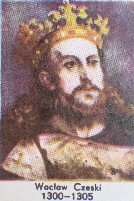
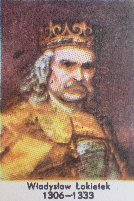
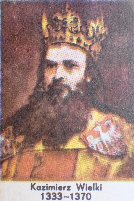
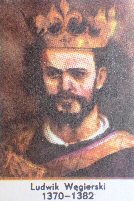 |
|
|
|
| |
The 14th century was marked by
significant political and social upheaval across Europe.
One of the most pivotal events was
the Hundred Years' War between England and France. This prolonged
conflict reshaped the political landscape of medieval Europe.
The Black Death, which
struck in the mid-14th century, devastated populations and altered
economic structures.
Its impact led to labour shortages and subsequent social changes.
In 1315, the Great Famine caused widespread starvation and hardship.
The rise of the Ottoman Empire
began towards the end of the century, influencing the balance of power
in the region.
The Avignon Papacy saw
the relocation of the papal court from Rome to France, causing religious
tensions. The Peasants' Revolt of 1381 in England was a direct response
to oppressive taxation and feudalism. Culturally the 14th century
witnessed the early stirrings of the Renaissance in Italy. Notable
figures such as Petrarch and
Dante laid the groundwork for humanist thought.
Technological advances, including
improvements in artillery,
transformed warfare. The
establishment of universities contributed to the spread of
knowledge and education.
Politically the century saw the decline of feudalism and the gradual
emergence of centralized monarchies. The Battle of Crécy in 1346
demonstrated the effectiveness
of the English longbow. Religious movements and heresies
challenged the authority of the Catholic Church.
The Treaty of Brétigny temporarily halted hostilities during the Hundred
Years' War.
The construction of Gothic
cathedrals, such as the Sainte-Chapelle, symbolised the era's
architectural achievements. The 14th century was a period of profound
transformation that laid the foundations for the modern age.
Despite the turmoil, it was also an era of cultural and intellectual
flowering. |
|
|
|
| 1300 |
|
|
|
|
| 1300 |
|
|
|
|
| 1301 |
|
|
|
|
| 1302 |
|
|
|
|
| 1303 |
Urodziła się święta Brygida Szwedzka.
Doświadczała objawień Maryi i Chrystusa na krzyżu. Wyszła za mąż mając
lat 13. Małżeństwo z Ulfem trwało 28 lat i przyniosło ośmioro dzieci.
Owdowiała w 1344 w wieku 41 lat i wtedy poświęciła swe życie Bogu.
Założyła nowe zgromadzenie Brygidki. W wieku 70 lat wyruszyła do Ziemi
Świętej, a utrudzona podróżą, zmarła w dniu, który sama przewidziała,
czyli 23 lipca 1373 roku. Patronka Szwecji. |
|
|
|
| 1304 |
|
|
|
|
| 1305 |
|
|
|
|
| 1306 |
|
|
|
|
| 1307 |
|
|
|
|
| 1308 |
|
|
|
|
| 1309 |
|
|
|
|
| 1310 |
|
|
|
|
| 1311 |
|
|
|
|
| 1312 |
|
|
|
|
| 1313 |
|
|
|
|
| 1314 |
The Scottish remained unconquerable. Army led by
Robert Bruce (Scottish
king), defeated the English at
the Battle of Bannockburn.
Cornish language - in
Cornwall, Gaelic language - in
Ireland, Celtic language
- in Welsh, Scottish
Gaelic language - in Scotland.
Romans (Latin
language), Anglos-Saxons
(German language), Vikings
(Danish language), Normans
(French Vikings language)
English wool was an extremely valuable commodity. Britain itself
became a popular place for foreigners to trade and work as a result.
This brought skilled labourers over too, resulting in significant
architectural improvements. Castles and cathedrals started to be built -
such as Lincoln Cathedral (construction commenced in 1072). |
|
|
|
| 1315 |
|
|
|
|
| 1316 |
|
|
|
|
| 1317 |
|
|
|
|
| 1318 |
|
|
|
|
| 1319 |
|
|
|
|
| 1320 |
|
|
|
|
| 1321 |
|
|
|
|
| 1322 |
|
|
|
|
| 1323 |
|
|
|
|
| 1324 |
|
|
|
|
| 1325 |
|
|
|
|
| 1326 |
|
|
|
|
| 1327 |
|
|
|
|
| 1328 |
|
|
|
|
| 1329 |
|
|
|
|
| 1330 |
|
|
|
|
| 1331 |
|
|
|
|
| 1332 |
|
|
|
|
| 1333 |
|
|
|
|
| 1334 |
|
|
|
|
| 1335 |
|
|
|
|
| 1336 |
|
|
|
|
| 1337 |
|
|
|
|
| 1338 |
|
|
|
|
| 1339 |
|
|
|
|
| 1340 |
|
|
|
|
| 1341 |
|
|
|
|
| 1342 |
|
|
|
|
| 1343 |
|
|
|
|
| 1344 |
|
|
|
|
| 1345 |
|
|
|
|
| 1346 |
|
|
|
|
| 1347 |
|
|
|
|
| 1348 |
The Black Death
arrived to Britain resulting lost approximately one third of population.
Britain continued to be hit by fresh waves of the disease all the way up
until the late 1600s,
resulting in millions of deaths. It is regarded as one of the worst
disasters in British history. |
|
|
|
| 1349 |
|
|
|
|
| 1350 |
|
|
|
|
| 1351 |
|
|
|
|
| 1352 |
|
|
|
|
| 1353 |
|
|
|
|
| 1354 |
|
|
|
|
| 1355 |
|
|
|
|
| 1356 |
|
|
|
|
| 1357 |
|
|
|
|
| 1358 |
|
|
|
|
| 1359 |
|
|
|
|
| 1360 |
|
|
|
|
| 1361 |
|
|
|
|
| 1362 |
|
|
|
|
| 1363 |
|
|
|
|
| 1364 |
|
|
|
|
| 1365 |
|
|
|
|
| 1366 |
|
|
|
|
| 1367 |
|
|
|
|
| 1368 |
|
|
|
|
| 1369 |
|
|
|
|
| 1370 |
|
|
|
|
| 1371 |
|
|
|
|
| 1372 |
|
|
|
|
| 1373 |
|
|
|
|
| 1374 |
|
|
|
|
| 1375 |
|
|
|
|
| 1376 |
|
|
|
|
| 1377 |
|
|
|
|
| 1378 |
|
|
|
|
| 1379 |
|
|
|
|
| 1380 |
|
|
|
|
| 1381 |
The Peasant's
Revolt. The Normans brought feudalism to England. Feudalism was a
system which managed the relationship between the king, landowners and
peasants. The king provided lords with land; in exchange for them
providing men/soldiers during war. Peasants were given a small area of
their lord's land, where they were entitled to grow food; but they had
to work for their lord in exchange and were not allowed to move away, so
later they started to revolt. |
|
|
|
| 1382 |
|
|
|
|
| 1383 |
|
|
|
|
| 1384 |
|
|
|
|
| 1385 |
|
|
|
|
| 1386 |
|
|
|
|
| 1387 |
|
|
|
|
| 1388 |
|
|
|
|
| 1389 |
|
|
|
|
| 1390 |
|
|
|
|
| 1391 |
|
|
|
|
| 1392 |
|
|
|
|
| 1393 |
|
|
|
|
| 1394 |
|
|
|
|
| 1395 |
|
|
|
|
| 1396 |
|
|
|
|
| 1397 |
|
|
|
|
| 1398 |
|
|
|
|
| 1399 |
|
|
|
|









